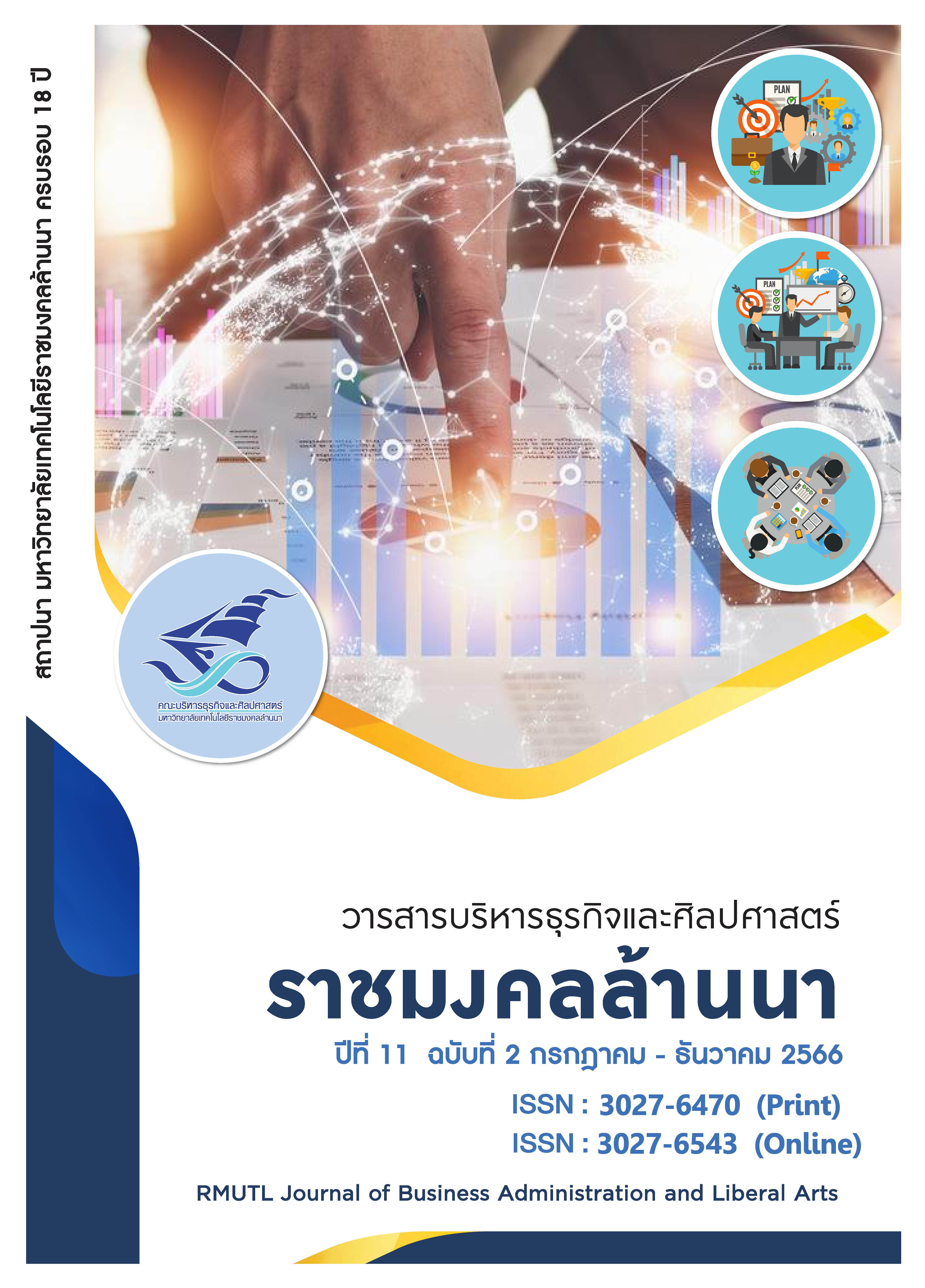Modeling to Reduce Transportation Costs by Linear Programming: A Case Study of the InnoFarm Biotech Company Limited
Main Article Content
Abstract
This research applied the linear programming model to analyze the allocation of organic fertilizer transport by InnoFarm Biotech Company Limited from the warehouses in three provinces, including Chanthaburi, Rayong and Trat, to seven distribution points, with the goal to minimize total transportation costs. The secondary data from relevant sources was employed while the problem was analyzed using the Solver function in Microsoft Excel. The results of this study informed a more efficient shipping allocation which is outlined as followed. Firstly, from the warehouse in Chanthaburi, the Company should ship 2,100 sacks of organic fertilizer to distribution point number 1, and 1,200 sacks to distribution point number 2. Then, from the warehouse in Rayong, 1,100 sacks of organic fertilizer must be shipped to the distribution point number 3 while the other 1,000 sacks, and 900 sacks, must be sent to distribution point number 4, and 5, respectively. Finally, from the warehouse in Trat, the shipment of 400 sacks, 800 sacks, and 600 sacks of organic fertilizer, must be allocated to the distribution point number 3, 6, and 7, respectively. The revised allocation strategy allowed all distribution locations to have the amount of products at their maximum capacity and also assisted the Company in reducing the transportation cost to 50,067 Thai Baht per week. According to the research, current operations does not employ any calculation tool in allocating the shipment of organic fertilizer. In fact, the Company mostly relies on existing experience and tend to transport products to distribution points located in the same province at once in order to minimize travel distance and costs. However, such technique is perceived as inefficient transportation route management and costs 56,317 Thai Baht per week. In conclusion, the shipment allocation strategy developed from the findings of this research allows the InnoFarm Biotech Company Limited to reduce overall transportation costs by 6,250 Thai Baht (11 percent) per week, while also assists in the planning of organic fertilizer transport from warehouses to distribution points to be more appropriately and more efficient.
Article Details

This work is licensed under a Creative Commons Attribution-NonCommercial-NoDerivatives 4.0 International License.
บทความวิจัยนี้เป็นของลิขสิทธิ์
References
Aboelmagd, Y.M. (2018). Linear Programming Applications in Construction Sites. Alexandria Engineering Journal, 57(4), 4177-4187.
Bungbua, P., and Patsopa, Y. (2021). Using a Linear Programming Model to Analyze the Allocation of Palm Oil Transportation from Planted Areas to the Place of Purchase in Sa Kaeo Province, North Eastern University Academic and Research Journal, 11(3), 258-272
Chandrakantha, L. (2008). Using Excel Solver in optimization problems. Mathematics and Computer Science Department. New York.
Chopra, S. and Meindl, P. (2003). Supply Chain Management: Strategy, Planning, and Operations (Translation: Vithaya Suharitdumrong). Second edition. Bangkok: Pearson Education Indochina.
Dantzig, G. B. (1951). Application of the Simplex Method to a Transportation Problem: in T.C. Koopmans (ed.) Activity Analysis of Production and Allocation, John Wiley & Sons, New York, Pages 359-373.
Fagoyinbo, I. S., Akinbo, R. Y., Ajibode, I. A. and Olaniran, Y. (2011). Maximization of Profit in Manufacturing Industries Using Linear Programming Techniques: Geepee Nigeria Limited. Mediterranean Journal of Social Sciences, 2(6), 97 - 105.
Hillier, F. S. (2010). Introduction to Operations Research, (Ninth Edition), Boston: McGraw-Hill Higher Education.
Hitchcock, F. L. (1941). The Distribution of a Product from Several Sources to Numerous Localities. Journal of Mathematical Physics, 20, 224 - 230.
Jankovic, O., Eiselt H.A., and Sandblom C. L. (2007). Linear Programming and Its Applications. Springer-verlag, Berlin Heidelberg, 2007.
Khan M. A. (2014). Transportation Cost Optimization Using Linear Programming. International Conference on Mechanical, Industrial and Energy Engineering (2014), 25 - 26 December, 2014, Khulna, BANGLADESH.
Limpanawanich, S. (2019). An Analysis of Distribution Center Location for Southern Zone: A Case Study of a Private Company. (Thesis Submitted in Partial Fulfillment of the Requirements for the Degree of Master of Engineering in Industrial Management). Songkla: Prince of Songkla University.
Mason, A. J. (2012). OpenSolver – An open source Add-in to solve linear and integer progammes in Excel. In D. Klatte, H.-J. Lüthi, & K. Schmedders (Eds.), Operations research proceedings 2011 (pp. 401–406). Springer
Mason, A. J., and Dunning, I. (2010). Opensolver: open source optimisation for excel. In Proceedings of the 45th Annual Conference of the ORSNZ (pp. 181-190). Operations Research Society of New Zealand.
Onwubiko, O. C. (1999). Introduction to Engineering Design Optimization. Upper Saddle River, NJ: Prentice-Hall.
Phosamrit, N. and Thammaponphirat, W. (2010). A Mathematical Model for Inventory-routing Problem. The Journal of King Mongkut's University of Technology North Bangkok, 20 (3), 544-551.
Pongchairerks, P. (2017). Linear Programming, Bangkok: Danex Intercorporation.
Positioningmag. (2005). Organic Fertilizer: Rising Amid the Natural Goods Consumption Trend (Online). Retrieved from: https://positioningmag.com/1152434 (30 May 2005).
Ratneetoo, B. (2009). Organic Fertilizer Improves Deteriorated Soil, Princess of Naradhiwas University Journal, 1(2), 1-16.
Theerarangsikul, T. and Wangwatcharakul, W. (2021). Designing of a Planning and Scheduling Tool for Earth Moving Operation under Limited Resource, Thai Journal of Operations Research, 9(1), 142-152.
Tonghatta, T. (2022, May 12). General Manager. Personal Communication.

